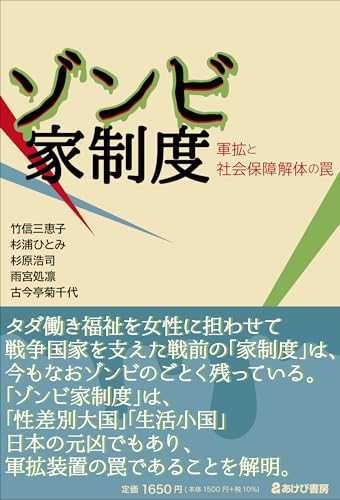
“Why is this man still complaining about such a thing?” I was disguised by a post by a 79-year-old man on the agony column of The Asahi Shinbun issued 29 October. He said he couldn’t forget many women he had had relationships with in his youth, and all of them rejected him when he called them. He wanted to stop thinking about them and enjoy his life in the way a typical man does, but he just didn’t know what to do. I thought it was such a silly question to read, but the phrase “a typical man” caught my attention.
How on earth does he think “a typical man” enjoy his life? There are many men in the world, with about 60 million in Japan alone. Each lives his own life and has his own way to enjoy it. Some love drinking, some are fond of hiking, while others like playing video games. Every man enjoys his life in his own way. So, does it make sense to assume that there’s a certain way a man is supposed to lead his life happily? What is the point to say, “A lives his life in the way a man should” while “B doesn't, so he isn’t a man enough?”
The word “typical” and the expression “be supposed to” are very tricky when they are used to describe certain kinds of people. The set phrase “a woman is supposed to do this or that” has been a cause of pain for most women for a long time. In other words, it was the model of “femininity.” People had been always telling them things like, “Women aren’t supposed to express themselves in public” and “Ladies are supposed to behave femininely.” If a woman was labeled as unfeminine, she felt as if her whole identity had been denied and it was very hard to restore it. To avoid such labeling, a woman stayed decent and humble in the way she was supposed to. However, what was this “femininity” after all? In the view of people with power, a woman was regarded as “feminine” when she obeyed their orders without any questions, while she was regarded as “unfeminine” when she disobeyed and told them what they didn’t want to hear. They used the word “unfeminine” to describe a woman who resist the authority with a sound argument and suppressed her.
The concepts of “a typical woman” and “a typical man” --- that is, “femininity” and “masculinity” --- assume that there are some standard models of a woman and a man. We use these concepts to measure how close people are to the models. In reality, however, are there any models of a woman and a man? What is “the typical woman” or “the typical man?” The answer depends on who you ask, so there would be no clear-cut model of a woman and a man which anyone could agree on.
People in authority had been trying to fabricate the models and impose them on others. They established plausible prototypes to produce “standardized goods,” so that they could control them easily. “A typical man who is strong and courageous,” for example, would obediently follow the order go to the battlefield. “A typical woman who is gentle and quiet” would never oppose a war or say no to the authority.
People in power had always put others in the frames of “the way they are supposed to be” to their convenience and oppressed those who went beyond the frames. One of such useful frames also had been applied to children; adults often labeled a child who talked back to them as “unchildlike.”
When the word “typical” is attached to some kinds of people --- such as men, women, children, company employees, school teachers, mothers, and fathers --- it creates certain stereotypes to categorize people. We can say “it's typical of A” when something A does represents his personality, but we can’t characterize someone as “a typical man,” “a typical woman” or “a typical child.”
Like I have my own way to enjoy my life to the fullest, you have your own. That’s enough for us, so why do we bother ourselves with searching for a fabricated model of “the way a typical man enjoys his life?”
Original Article : https://wan.or.jp/article/show/6928
Translated by N. Tajima
 慰安婦
慰安婦 貧困・福祉
貧困・福祉 DV・性暴力・ハラスメント
DV・性暴力・ハラスメント 非婚・結婚・離婚
非婚・結婚・離婚 セクシュアリティ
セクシュアリティ くらし・生活
くらし・生活 身体・健康
身体・健康 リプロ・ヘルス
リプロ・ヘルス 脱原発
脱原発 女性政策
女性政策 憲法・平和
憲法・平和 高齢社会
高齢社会 子育て・教育
子育て・教育 性表現
性表現 LGBT
LGBT 最終講義
最終講義 博士論文
博士論文 研究助成・公募
研究助成・公募 アート情報
アート情報 女性運動・グループ
女性運動・グループ フェミニストカウンセリング
フェミニストカウンセリング 弁護士
弁護士 女性センター
女性センター セレクトニュース
セレクトニュース マスコミが騒がないニュース
マスコミが騒がないニュース 女の本屋
女の本屋 ブックトーク
ブックトーク シネマラウンジ
シネマラウンジ ミニコミ図書館
ミニコミ図書館 エッセイ
エッセイ WAN基金
WAN基金 お助け情報
お助け情報 WANマーケット
WANマーケット 女と政治をつなぐ
女と政治をつなぐ Worldwide WAN
Worldwide WAN わいわいWAN
わいわいWAN 女性学講座
女性学講座 上野研究室
上野研究室 原発ゼロの道
原発ゼロの道 動画
動画


![[広告]広告募集中](https://wan.or.jp/assets/front/img/side_ads-call.png)












